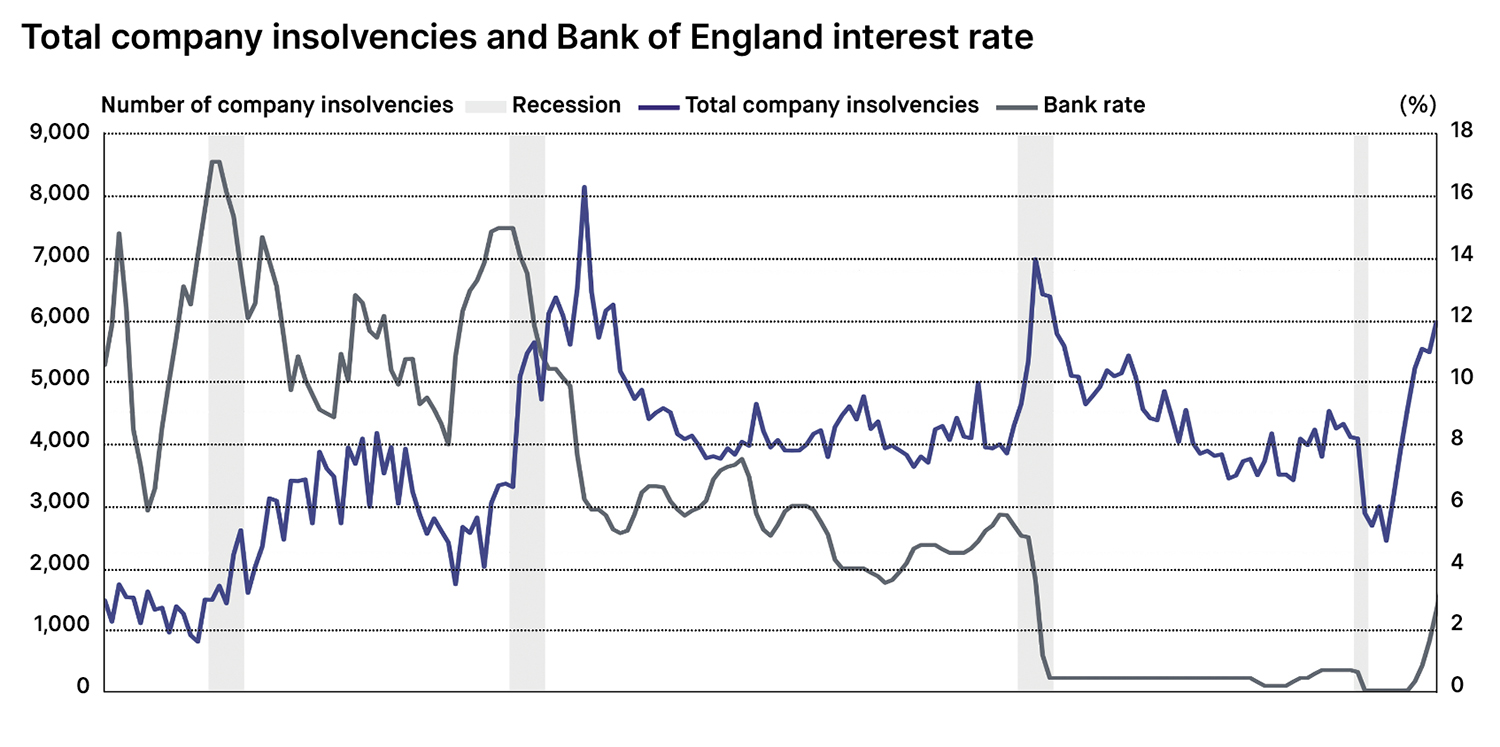
Despite avoiding a recession in 2022, the construction sector must brace itself for the likelihood of rising insolvencies, writes Pablo Cristi Worm.
Gross domestic product figures released at the end of March 2023 revealed that the UK narrowly avoided entering a recession in 2022. However, the economy is not in the clear yet. Growth remains subdued and, regardless of whether the country enters a technical recession, the impact of high inflation, rising interest rates and faltering demand means that construction must brace for the prospect of insolvencies to continue to climb.
Historically, insolvencies tend to rise during recession and peak thereafter as cashflows hollow out during market contractions and companies then lack the capital to deliver on increased demand as workloads recover.
The Covid-19 recession bucked this trend. While economic activity fell by over a fifth between Q1 and Q2 of 2020, business failures dropped to levels not seen since 1989.
This contrast was fuelled by the fiscal incentives and emergency measures that managed to protect the economy in the short term. This, however, only prolonged the inevitable. In 2021 Q1, insolvencies started to rise as assistance was phased out. In 2022 Q4 they stood at their highest levels since 2007, with 6,251 recorded – 1,112 from the construction industry.
Interest rate pressure
With further interest rate hikes anticipated this year, the current trajectory is following previous trends. Though the support measures delayed the usual increase in insolvencies, these are now expected to continue growing irrespective of whether the UK enters a recession.

Rising interest rates – now at a level not seen in over two decades – combined with inflated costs, add further pressure at a time when demand and investment show signs of slowing. This all points towards the likelihood that there is a while to go before the rate of insolvencies will noticeably fall.
Traditionally, construction insolvencies reflect the pattern of the broader economy, albeit slightly amplified. The whole economy is grappling with cost escalation of materials, energy and labour, alongside supply chain challenges and rising interest rates. But construction is particularly vulnerable, in part due to its high number of small and medium enterprises (SMEs).
Unique challenges
A number of unique challenges cause SMEs to be more exposed to economic disruption, including more limited access typically to liquidity and less consistent pipelines of work making it more difficult to secure financing at good rates. Earlier this year, industry monitor Red Flag Alert issued a staggering warning that more than 100 firms within the sector could collapse each week in 2023.

Construction must therefore brace for the probability that insolvency levels may continue to rise. Early engagement of contractors and suppliers can be critical to mitigating the risk of insolvencies.
This can provide greater visibility of pipelines of work, allowing time to adjust resources to suit demand. In addition, clients should take a collaborative approach to risk allocation within contracts – considering where risk can be balanced and shared, helping to keep the supply chain solvent.
There are still headwinds to come but embracing ways of working to mitigate insolvencies now will help to ensure the industry has the capacity to deliver on investment now – and, crucially, when the economy returns to growth.
Pablo Cristi Worm is an economist at Turner & Townsend.











